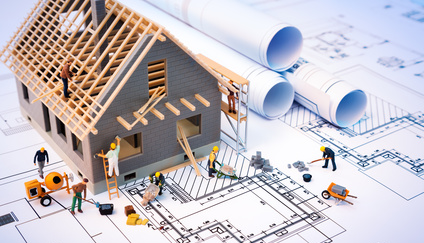

BREEAM and LEED Certification: What QS Professionals Need to Know
In today's construction landscape, sustainability isn't a buzzword—it’s a requirement. Increasingly, developers, investors, and public sector clients are aiming to achieve BREEAM or LEED certification to demonstrate environmental responsibility and futureproof their assets.
But achieving certification isn’t just down to architects or environmental consultants. Quantity surveying professionals play a critical role in ensuring these green goals are delivered on time, on budget, and to spec.
At DQS Consulting, we specialise in sustainable quantity surveying, guiding clients through the complexities of cost, compliance, and certification. In this blog, we’ll explain what BREEAM and LEED certification mean, and what quantity surveyors need to know to contribute effectively.
What Are BREEAM and LEED Certifications?
BREEAM (Building Research Establishment Environmental Assessment Method)
The UK’s leading sustainability assessment method for buildings.
Covers energy use, health and wellbeing, materials, transport, waste, water, and management.
Projects are rated from Pass to Outstanding.
LEED (Leadership in Energy and Environmental Design)
An international green building certification system, developed in the US but widely used globally.
Focuses on energy efficiency, water use, indoor environmental quality, and material selection.
Projects earn points across categories and are certified at Certified, Silver, Gold, or Platinum level.
The Role of Quantity Surveyors in Green Certification
A quantity surveyor isn’t just a cost consultant—they’re a key player in helping projects achieve and maintain sustainability targets through intelligent budgeting and project controls.
1. Budgeting for Sustainability Features
Green features often come with higher upfront costs but lead to long-term savings. Quantity surveyors help evaluate options based on initial cost vs. long-term value, ensuring clients get the best return on investment (ROI).
Example: QS professionals can compare costs for low-energy HVAC systems vs. conventional models, assessing payback periods and carbon impact.
2. Life Cycle Costing and Whole-Life Value
Certification bodies reward buildings that prioritise long-term performance over short-term savings. Quantity surveyors apply Life Cycle Costing (LCC) to support decisions around:
Sustainable material selection
Energy-efficient systems
Maintenance planning
Related Read: The Role of Life Cycle Costing in Sustainable Construction
3. Procurement Strategy & Supply Chain Alignment
To meet BREEAM or LEED requirements, materials must often be sourced from responsible or certified suppliers. QS professionals help:
Ensure BREEAM/LEED-compliant procurement (e.g. FSC-certified timber)
Review contractor bids with sustainability targets in mind
Factor in local sourcing to reduce embodied carbon
4. Cost Planning for Certification Compliance
Achieving certification means investing in specific credits—each with associated costs. Quantity surveyors help assess:
Which credits offer best value for investment
Trade-offs between credits and budget constraints
The cost of documentation and third-party validation
Tip: Not every credit is equal—QSs help prioritise those that are most impactful and cost-effective.
5. Supporting Design Teams with Quantifiable Data
QS professionals work closely with architects, engineers, and sustainability consultants to:
Provide cost modelling for low-carbon options
Identify cost-effective strategies for point maximisation
Track carbon and financial performance throughout project phases
Common BREEAM & LEED Elements Influenced by Quantity Surveying
Challenges and How QS Professionals Overcome Them
“Green Premium” Misconceptions
Clients often fear that going green equals going over budget. QSs help debunk this myth with data, showing that:
Many sustainable choices lead to lower long-term costs
Grant funding or tax incentives can offset initial investments
Sustainable buildings typically have higher asset value and rental yield
Balancing Performance with Cost
Not every project has the budget for a LEED Platinum or BREEAM Outstanding rating. QSs help clients:
Find the right certification level for their goals
Strategically select credits that deliver the most value
Maintain design integrity while hitting budget targets
Final Thoughts
BREEAM and LEED certification offer powerful advantages—from carbon reduction and cost savings to improved building value and investor appeal. But achieving them requires more than good design—it requires strategic cost planning and robust project controls, led by experienced quantity surveyors.
At DQS Consulting, we work hand-in-hand with clients and project teams to ensure that sustainability is built into the budget—not bolted on at the end. Whether you're aiming for BREEAM Excellent or LEED Gold, our sustainability-focused QS services can help you hit your targets without overspending.
Looking to deliver a certified sustainable project on budget? Contact DQS Consulting today for expert advice on quantity surveying for green construction.
Related Reads:
Discover more about surveying
What is Quantity Surveying in Construction?
Find out more about what is quantity surveying in construction
What is a Quantity Surveying Course?
Find out more about what is a quantity surveying course.
How to Study Quantity Surveying
Find out more about how to study quantity surveying.
What is Quantity Surveying in Construction Economics?
Find out more about what is quantity surveying in construction economics.
Get in touch
Every construction project is unique which is why we tailor our quantity surveying services to your needs. From cost management to risk assessment and compliance, we deliver clear, sustainable solutions.
Get in touch today to discuss your project.







